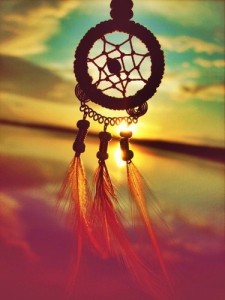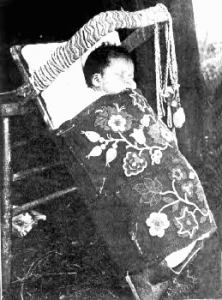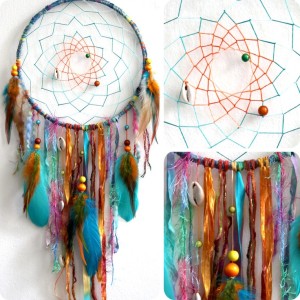Dreamcatchers
 When trying to describe a dreamcatcher, most would probably say it is a hoop with a twine web in the middle and is often decorated with beads and feathers. It is so much more than that though. Dreams have always been a major part of Native American culture. They believed night air was completely filled with dreams, good and bad, and would hang a dream catcher to catch the bad dreams in the web while the good dreams would get through the center and slip down the feathers into the sleeping minds. That wasn’t the only reason for the feathers though, it also symbolized breath or air, which is essential for life.
When trying to describe a dreamcatcher, most would probably say it is a hoop with a twine web in the middle and is often decorated with beads and feathers. It is so much more than that though. Dreams have always been a major part of Native American culture. They believed night air was completely filled with dreams, good and bad, and would hang a dream catcher to catch the bad dreams in the web while the good dreams would get through the center and slip down the feathers into the sleeping minds. That wasn’t the only reason for the feathers though, it also symbolized breath or air, which is essential for life.
The tribe who originated the dreamcatcher was the Ojibwe tribe, though many thought it was the Sioux. There are so many different stories about how the dreamcatcher came to be, but the most popular is the one about Asibikaasi, the Spider Woman. The story goes that Asibikaasi took care of the people of her land as she continues to do to this day, when the Ojibwe nation traveled to four separate corners of North America, to fulfill a prophecy, she had a difficult time reaching all the cradles. The mothers, sisters, and grandmothers took up the weaving of magical webs for the new babies. Everything about these webs were symbolic from the center which represented Asibikaasi, to the round shape to represent how giizis (the sun) travels each day across the sky, and finally the feathers which, as stated earlier symbolize breath or air, and ultimately, life. The number of points where the web connects to the hoop is symbolic, eight for the Spider Woman’s eight legs, or seven for the seven prophecies. These dreamcatchers would protect the minds of the sleeping person. The bad dreams would be tangled in the web and perish with the first light of day. Dreamcatchers for children were made from willow and sinew so that they wouldn’t last, which was intended to show the temporary nature of childhood, while adult dream catchers are made of woven fiber to represent their adult dreams, and don’t include feathers in most cases.
in the web and perish with the first light of day. Dreamcatchers for children were made from willow and sinew so that they wouldn’t last, which was intended to show the temporary nature of childhood, while adult dream catchers are made of woven fiber to represent their adult dreams, and don’t include feathers in most cases.
Dreamcatchers are now made and sold in craft festivals, online, and are even a common household craft. While Native American’s don’t recognize these as real dream catchers, people all over the place have them and still believe in their powers. Today they include gemstones, colorful ribbon, beads, basically anything the creator wishes to put on them. Though you can definitely still find authentic ones, these crafts are much more common. They’re very easy to make, and are easily customized. Very few actually still follow the specific guidelines that originally existed for dreamcatchers. Not only are dreamcatchers a very common item in households now, they are also the inspiration for a lot of art. Many people paint pictures of dreamcatchers for their symbolic  meaning, and they even make for beautiful tattoos, symbolizing filtering the bad out of your life and only allowing the good vibes. From ancient stories to simple room decor to art, dreamcatchers will stand the test of time.
meaning, and they even make for beautiful tattoos, symbolizing filtering the bad out of your life and only allowing the good vibes. From ancient stories to simple room decor to art, dreamcatchers will stand the test of time.
